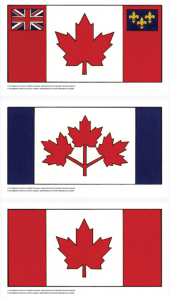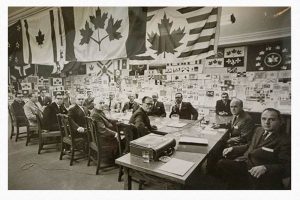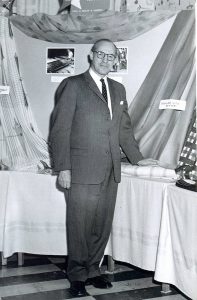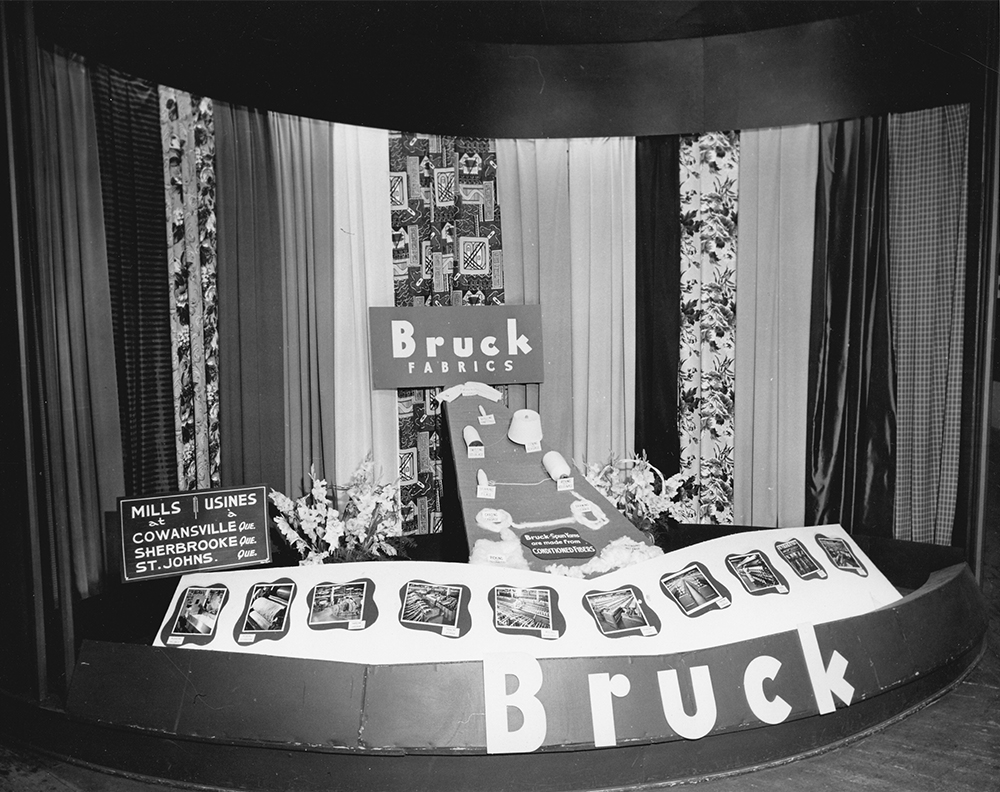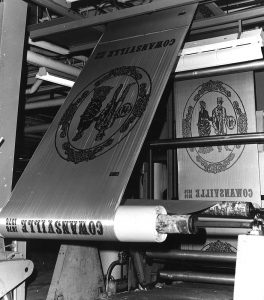The first Canadian flag: reputation and modernization
The Canadian government entrusts Bruck Mills with orders that speak to the excellence of its products and reputation, which include the prestigious contract for the Canadian Maple Leaf flag.
The first Canadian flag
In 1964, the factory undertakes the secret production of several prototypes of the Canadian flag. This task, commissioned by the Lester B. Pearson government, is part of a process that leads to the adoption of the Maple Leaf by the House of Commons and the Senate in December 1964.
Even before the design is approved, Bruck is already preparing to produce the flags by weaving a special nylon and training the printing staff. This proves to be a useful precaution, as Bruck Mills is soon in high demand for official Canadian flags.
Expo 67 and the People Tree
This prestigious contribution is again solicited for the 1967 International and Universal Exposition in Montréal. According to former executive Gerald Thomas, Bruck supplies not only Canadian flags, but also those of many other countries. It also participates in the production of textiles that make up the People Tree erected in front of the Canadian Pavilion.
The colour blue of the Quebec flag and the Montréal Olympics
In 1968, Bruck Mills is also asked to establish the dyeing standards for the blue colour of the Quebec flag. To keep up with the high demand for flags, some of the plant’s seamstresses do extra sewing at home, earning 25 to 75 cents apiece. In preparation for the 1976 Montréal Olympic Games, Bruck works with other manufacturers to produce the official flags.
Specialty niches and upholstery fabrics
The company focuses on modernizing its facilities and on specialized niches such as upholstery fabrics. It also develops an internal process to ensure the continuous training of its workers.


